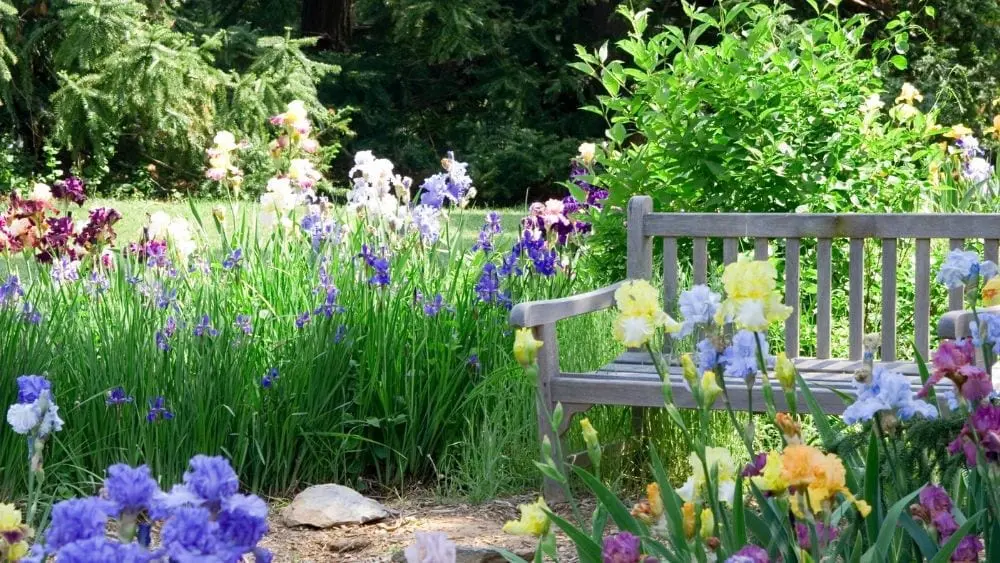
Landscaping is one of the most misunderstood aspects of homebuilding and design.
From the outside looking in (wink wink), it seems easy, right? Just dig some holes, throw in dirt and pop in plants.
That couldn’t be farther from the truth, at least not if you want your garden to flourish and provide enjoyment for years to come. “People can be pretty naïve about how much is involved,” says landscape architect Mario Nievera, whose design firm, Nievera Williams, has clients in both New York and Palm Beach, Fla.
We asked Nievera and other top landscape experts for some of the most common mistakes that homeowners make when designing their landscape, so you can avoid the same pitfalls. After all, “We all learn our best lessons from doing things the wrong way,” says Ted Cleary, a landscape architect in Charlotte, N.C.
Mistake 1: Not Knowing Your Limits
Does the prospect of spending Saturdays working in your yard make your cringe? Are you the occasional weekend gardener or are you a die-hard landscape lover? If your green space isn’t designed to pretty much take care of itself, you best be the latter. Most people underestimate how much maintenance is involved with a project and how much of it they’re really willing to take on themselves.
Be realistic about your expectations and your ability to meet them. Many people love the idea of gardening but simply don’t have the lifestyle or schedule to support it. There are lots of great products that can ensure your garden receives water and fertilizer, for example, but plants aren’t going to prune themselves and leaves won’t magically pile up in a neat stack on their own.
You’ve got to expect some maintenance and buy the appropriate tools or hire a crew to take care of it for you. If all you can afford is a consult or two with a pro, it might be worth it to ensure you don’t set yourself up for a garden or backyard that leaves you feeling overwhelmed.
Mistake 2: Forgetting to Make a Plan First
Call a pro and the first thing you’ll notice is how they greet you with pen and paper in hand. After chatting with you about your lifestyle and expectations, he or she will often walk the site, drawing it out as they go and making notes about things like water availability, wind direction and soil.
You don’t need to be a pro or call one to have a similar plan. If you’re a DIYer, draw your home and green space as best you can and make notes of areas that receive full sun all day, partial sun, where the water access is and what kind of soil you have, to name a few of the most important points to consider.
“Walk around and think about what you really like about the site and what parts make you feel stressed,” says Cleary. “Think about how you’d most like to use the space, then think about any guests you may have and what you want them to see and feel when they come over.”
Also take note of where you might want more sun or shade, perhaps even more space, and where you want to promote activity and rest. “I encourage people to see landscape as a series of movement and rest stops,” Cleary adds.
When you’re finished, take your paperwork to a reputable garden center and ask for help selecting plants. You still have to invest the time planning and researching, but it’s a lot softer on the wallet.
Mistake #3: Waiting Too Long to Get the Landscape Going
When building your new home, don’t forget a landscaping plan. Determining how you’ll use the space before you begin landscaping will help you avoid costly mistakes.Some experts say the difference between a great homebuilder and an average one is how much they take the exterior of a home into consideration from the get-go. “Landscaping takes a while to develop, so it’s important to get it in at the start,” says independent landscape architect Rob Pearce.
If you’re building new, talk through the details of your outdoor space with your builder or architect as early as possible. Even if you put certain pieces off until later, you can at least lay the necessary groundwork to avoid costly redos later.
Mistake #4: Not Matching the Landscape to Your Family’s Lifestyle
How much time does your family spend outside right now? Do you entertain? Do a lot of grilling? These are all questions to ponder before settling on a landscape design, as it will determine the number and placement of seating areas, as well as the type of plantings.
If you like to read or relax outside several months out of the year, for example, choose plants and shrubs that bloom at different times, so you’re constantly enjoying the look and scent of your space.
Got kids? Stay away from anything thorny or toxic, especially if you’re going to encourage your little ones to play outside. Kids like to pull leaves off plants, then they rub their eyes and nose, transferring the residue. “You’d be surprised how many homes I’ve gone to with toxic plants within a child’s reach,” Nievera says.
Animals need consideration, too. Both the kind you want, like dogs and cats, and those you don’t, like deer and rodents that eat flowers and plants and dig holes in your yard. If your garden has lots of flowers, you can expect plenty of insects and bees. Trees that litter leaves all over the place invite rodents and more insects who love to hide out and forage for bugs.
Mistake #5: Tackling the Landscape Without the Hardscape
So much about the hardscape — the pathways, patios and steps — affects the landscape, so it’s important to take it into consideration as early on in the process as possible. Everything needs to be pitched for runoff, for example.
“People don’t often realize how much work goes into choosing materials that work with the architecture of the home and with the climate,” Nievera says. For example, hardscape should be built to last and not crack, even in cold weather, so make sure you consider the hard and soft stuff at the same time.
Mistake #6: Forgetting to Properly Prep and Nourish the Soil
“A good garden has to be prepared before it’s planted, which means you’re paying for things that you’re not really going to see, like soil and drainage,” Nievera says.
You have to invest in the stuff that comes before all the pretty things. Each soil type is different, so do your homework and figure out which type of soil you have, then treat it properly. Preparing the soil ensures a healthy plant that will require less maintenance, so the investment is worth it. “Don’t put a $10 plant in a $3 hole,” adds Cleary. Knowing which weather zone you’re in will also help you determine your soil’s needs.
Most people underestimate how much maintenance is involved with a project and how much of it they’re really willing to take on themselves.Also think about your irrigation needs early on, before you put in hardscape, if possible. “Irrigation is a double-edged sword,” says Cleary. “I encourage people to put in irrigation the first year because you don’t need to water as often after the first or second year.”
Most plants, he says, get overwatered. The only thing that really needs consistent watering is turf grass. If possible, consider drip irrigation to get to the root of plants, underneath the mulch, rather than just sprinklers, since water doesn’t always penetrate as deep as plants need it.
If you want exterior lighting, both on certain plantings and for cooking and entertaining, the trenching and ground work is best done during the soil prep phase. “You won’t want to dig holes or trenches on grass or areas you’ve already worked on,” Nievera says.
Mistake #7: Having the Right Plant in the Wrong Spot, or Vice Versa
Many people visit a big-box retailer and choose plants based on how they look today without thinking about what they will look like tomorrow, especially the size they will reach at maturity. Some plants can grow so big and fast that they end up against your house or worse, the neighbor’s house, says Pearce. Think about what the plant will look like in a year and 10 years, plus how it’ll look as seasons change, then make your selections.
Planting in the wrong spot is also a common problem. As plants and trees mature, they can end up blocking windows and pathways, so make sure you choose the right areas.
Think about what you want the landscape to accomplish, such as ones that provide shade. “One general rule is to plant shade trees on the southwest side of the house, so they can provide relief when it’s hot in the summer,” he recommends. “Then in the winter, when the leaves fall off, you get the heat from the sun when you want it.”
When you’re looking at sun patterns, make sure you check back throughout the day, adds Nievera. “Many people look at the sun and shade areas once and forget that they change as the day progresses.”
Mistake #8: Too Much Variety in the Landscape
Many homeowners try to mix and match all the plants that catch their eye and the landscape ends up looking messy. The eye doesn’t know where to go, so it goes nowhere and you don’t appreciate the true beauty of your home, warns Pearce.
Instead of choosing plants of different sizes and textures, create small groups that work well together, which means they have similar water and fertilizer needs and, perhaps, look similar, too. “In general, keep tall plants positioned in the corners and away from windows and place shorter plants near doors and under windows, where you want the visibility,” says Pearce. “Less is more in many cases.”

Ana Connery is former content director of Parenting, Babytalk, Pregnancy Planner and Conceive magazines as well as parenting.com.
While editor in chief of Florida Travel & Life magazine from 2006-2009, she covered the state’s real estate and home design market as well as travel destinations.
She’s held senior editorial positions at some of the country’s most celebrated magazines, including Latina, Fitness and Cooking Light, where she oversaw the brand’s “FitHouse” show home.
Ana’s expertise is frequently sought after for appearances on “The Today Show,” “Good Morning America” and CNN. She has interviewed the country’s top experts in a variety of fields, including U.S. Secretary of Education Arne Duncan and First Lady Michelle Obama.
 How to Finance a Condo
How to Finance a Condo